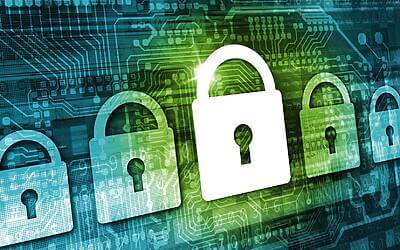Understanding NIST Cybersecurity Framework: A Beginner’s Guide for IT Managers
As an IT manager or director, cybersecurity compliance is likely top of mind for you. Understanding the National Institute of Standards and Technology (NIST) requirements is essential to ensure your organization meets all required criteria. NIST provides extensive guidance on various aspects of cybersecurity approaches, from best practices to standards and infrastructure development. While it can seem intimidating at first, let us help you take the first steps towards understanding NIST so that you can begin implementing secure measures within your organization.
What is NIST
NIST, or National Institute of Standards and Technology, is a non-regulatory federal agency that provides standards and guidelines for organizations to manage and secure their IT systems and data. The NIST Cybersecurity Framework is a widely adopted set of guidelines and principles designed to improve IT security risk management across all sectors and industries. If you’re an IT manager or director, understanding the basics of NIST Cybersecurity Framework is essential to ensure your organization’s data is secure from cyber threats. In this blog post, we’ll cover the basics of the NIST Framework and answer some common questions IT managers and directors might have about it.
For a more in-depth dive into NIST CSF see: What is the NIST Cybersecurity Framework
What industries have to adopt NIST?
NIST provides guidelines, standards, and best practices that can be applicable to a wide range of industries and types of businesses. NIST’s work often focuses on areas such as technology, cybersecurity, and measurements, which have implications across various sectors. Here are a few industries and types of businesses that commonly apply NIST guidelines:
- Cybersecurity and IT: NIST’s cybersecurity framework (NIST CSF) is widely used by organizations to assess and improve their cybersecurity posture. This framework is applicable to virtually any business that uses information technology and wants to safeguard its digital assets.
- Government Agencies: NIST guidelines are frequently adopted by government agencies to ensure secure and efficient operations. The Federal Information Security Management Act (FISMA) requires federal agencies to follow NIST standards for information security.
- Financial Services: Businesses in the financial sector often follow NIST recommendations to ensure the security of customer data, online transactions, and other financial operations.
- Healthcare: NIST guidelines can help healthcare organizations protect patient information, comply with regulations like the Health Insurance Portability and Accountability Act (HIPAA), and secure medical devices and systems.
- Manufacturing and Industrial Control Systems (ICS): NIST standards are applied to secure industrial control systems, which are used in manufacturing and critical infrastructure sectors to control and monitor physical processes.
- Energy: NIST guidelines can help the energy sector secure their infrastructure and data, particularly in relation to smart grids and energy management systems.
- Telecommunications: Telecom companies can benefit from NIST’s guidance on securing communication networks and data.
- Retail and E-commerce: Businesses that handle customer payment data online can benefit from NIST’s recommendations for securing payment systems and preventing data breaches.
- Aerospace and Defense: NIST standards are often adopted in the aerospace and defense sectors to ensure the security and integrity of sensitive data and systems.
- Research and Academia: Institutions conducting research or offering educational programs in fields related to technology, cybersecurity, and engineering might incorporate NIST guidelines into their curriculum or research projects.
Remember that while NIST guidelines are widely recognized and adopted, their applicability might vary based on the specific context and requirements of each industry and business. It’s important to assess which NIST guidelines are most relevant to your organization’s operations and needs.
What are the 5 Levels of NIST
NIST has identified five different levels of security maturity that organizations can use to assess their cybersecurity posture and make improvements. These levels are:
Initial: At this level, organizations have an ad-hoc approach to cybersecurity risk management, and security controls are not yet in place.
Repeatable: Organizations at this level have begun to establish standardized processes for managing cybersecurity risks, but there is still significant room for improvement.
Defined: At this level, organizations have a formalized and approved set of cybersecurity policies and procedures in place to protect their sensitive data and IT systems.
Managed: Organizations at this level have implemented a comprehensive risk management program that includes regular testing and monitoring of their IT infrastructure, analysis of threats, and a detailed incident response plan.
Optimized: At this highest level of maturity, organizations have an established culture of continuous improvement, with regular assessments of their cybersecurity posture, the implementation of best practices, and consistent employee training on cybersecurity risks and best practices.
What is “NIST 2?”
NIST 2 is the second version of the NIST Cybersecurity Framework, which was released in 2018. NIST 2 includes a number of updates and improvements to the original framework, including new subcategories for supply chain security and data privacy management. Moreover, NIST has released various guidelines and best practices for securing different types of systems and applications, including cloud, mobile, and internet of things (IoT) devices.
What’s the best way to keep up with NIST protocol?
To keep up with NIST protocol, an easy way is to regularly check out the NIST cybersecurity website, which provides the latest news and updates on NIST frameworks, publications, compliances, and best practices. Additionally, joining industry groups and subscribing to cybersecurity newsletters and publications can also help IT managers stay on top of emerging cybersecurity risks and best practices.
Compliance with NIST CSF enables organizations and companies to manage cybersecurity risks in today’s highly connected and complex digital environment. Understanding the five levels of maturity can help IT managers and directors identify gaps in their organization’s cybersecurity posture and implement improvements. While there are many different NIST frameworks and guidelines to keep track of, staying informed about the latest updates and best practices is essential to ensure the protection of your organization’s valuable data and systems.




